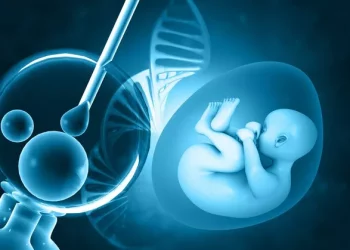The miracle of conception is a complex tapestry, weaving together intricate biological events, timing, lifestyle habits, and overall health. For many couples, the path to pregnancy can be challenging, giving rise to feelings of fear, confusion, and a never-ending loop of questions. This article presents an expansive picture of the various factors that can affect the chances of conception.
Understanding Conception: The Basics
Conception occurs when a sperm cell from a fertile man fertilizes an egg cell from a fertile woman. It’s a delicate process that requires optimum reproductive health, hormone levels, and impeccable timing.
Fertility and Age: The Unseen Connection
Fertility doesn’t remain constant; it changes with age. Women are born with a finite number of eggs that gradually decrease in number and quality with age, impacting chances of conception. Age in men can also affect sperm count and motility, collaterally influencing fertility.
Ovulation Disorders: The Invisible Barrier
Ovulation disorders, including Polycystic Ovary Syndrome (PCOS), Hypothalamic Dysfunction, and Premature Ovarian Failure, can disrupt the release of eggs from the ovaries. That either railway or stalls the journey to conception.
Body and Balance: The Role of Weight in Fertility
Weight, both excess and insufficient, seriously affects fertility. Obesity may cause hormonal imbalances and problems with ovulation, while being underweight can cause irregular menstrual cycles and halting ovulation.
Lifestyle and Fertility: The Impact of Choices
Lifestyle plays a significant role in fertility levels. Smoking, drinking, substance abuse, diet, exercise, and physical and mental stress cause shifts in fertility levels, influencing conception chances.
Unveiling the Sexual Health Hurdles
Sexual health issues like erectile dysfunction or premature ejaculation in men, and painful intercourse or lack of sexual desire in women, can reduce chances of conception.
Medical Conditions: Exploring the Hidden Influence
Certain medical conditions such as untreated celiac disease, cancer, kidney disease, diabetes, untreated thyroid problems, and certain genetic conditions, can lead to difficulties in getting pregnant.
Understanding Structural Problems: A Visible Obstacle
Structural problems, including damage or blockage of fallopian tubes in women or blockage in male duct system, restrict the union of sperm and egg, making conception difficult.
Untangling the Mysteries of Unexplained Infertility
Sometimes, difficulty in conception remains unexplained irrespective of normal health conditions. These instances underline the complex and multi-faceted nature of fertility.
The Emotional Roller Coaster of Trying to Conceive
The emotional toll of trying to conceive should not be underestimated. The stress, anxiety, depression, or relationship troubles that can accompany a prolonged conception process may further complicate the journey towards pregnancy.
Conclusion: A Holistic Take On Pregnancy Difficulties
Navigating the intricate maze of conception can be challenging and daunting. Recognizing and understanding that a myriad of factors may influence the pregnancy journey is critical. The path to conception is not always linear, and each couple’s journey is as unique as the individuals themselves. It underlines the importance of patience, self-care, medical guidance, emotional support, and maintaining hope while embarking on the rewarding expedition towards parenthood.
Embarking on the journey to parenthood is a remarkable stage in life, filled with anticipation, excitement, and, often, apprehension. When this path is strewn with difficulties in getting pregnant, the perceived joyous journey can swiftly transform into an uphill traverse riddled with stress and concern. In such scenarios, an all-encompassing understanding of the potential obstacles to conception becomes invaluable.
The process of conception relies on a delicate biological symphony involving an array of factors like age, weight, lifestyle choices, sexual health, medical conditions, and structural issues. Each factor represents a piece of the fertility puzzle, and when even a single piece is out of alignment, the process can face significant hurdles. Recognizing that conception is a layered process keeps one conscious of the importance of overall health and preventive management of medical conditions and lifestyle decisions.


























